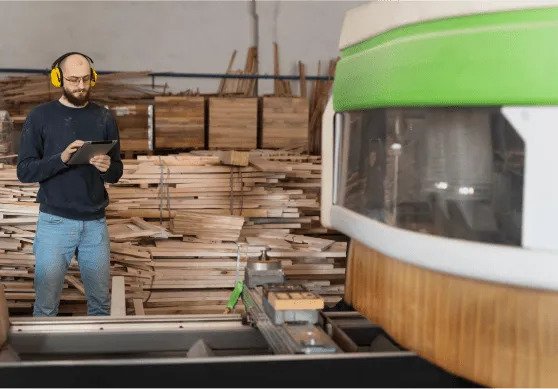
When it comes to construction projects, accurate planning is the backbone of success. Two terms often used in the industry are lumber takeoff and material estimating. While they may sound similar, these two processes serve different purposes and impact the outcome of a project in unique ways. Understanding their differences can help builders, contractors, and even DIY enthusiasts save time, money, and avoid costly mistakes.
What Is a Lumber Takeoff?
A lumber takeoff is a detailed list of all the lumber materials needed for a construction project. It involves going through the architectural blueprints and identifying every piece of wood required, from structural framing to finishing trim.
The purpose of a lumber takeoff is to ensure that a builder orders the correct type, size, and quantity of lumber before construction begins. This process is essential because even a small miscalculation can delay a project or increase costs.
What Does a Lumber Takeoff Include?
A lumber takeoff typically includes:
Type of Lumber (e.g., softwood, hardwood, treated lumber)
Sizes and Dimensions (2×4, 2×6, 4×4, etc.)
Quantities (how many boards, beams, or sheets are required)
Specialty Items (plywood, engineered wood, trusses, etc.)
In short, a lumber takeoff focuses solely on wood-based materials. It doesn’t account for nails, fasteners, concrete, or other building supplies.
What Is Material Estimating?
Unlike a lumber takeoff, material estimating is a broader process. It calculates all the building materials required for a project — not just lumber. This includes concrete, steel, roofing, drywall, flooring, plumbing, electrical supplies, and more.
The goal of material estimating is to determine the entire scope of resources needed for a project and often includes both quantities and costs. This process is more comprehensive and is usually handled by a cost estimator or project manager.
What Does Material Estimating Include?
A complete material estimate usually covers:
Structural Materials (lumber, steel, concrete)
Finishing Materials (paint, flooring, roofing, siding)
Mechanical & Electrical (pipes, wiring, fixtures)
Labor Costs (sometimes factored into estimates)
Waste Factors & Contingencies
In other words, material estimating is the big picture process that ensures all building elements are accounted for — not just wood.
Key Differences Between Lumber Takeoff and Material Estimating
Though both processes deal with construction planning, they differ in scope, detail, and application.
| Aspect | Lumber Takeoff | Material Estimating |
|---|---|---|
| Scope | Only lumber/wood materials | All building materials (wood, concrete, steel, electrical, plumbing, etc.) |
| Purpose | Ensure accurate lumber quantities | Determine total materials & costs |
| Detail | Highly detailed lumber breakdown | Broader, covers multiple materials |
| User | Framers, carpenters, lumber suppliers | General contractors, project managers, estimators |
| Impact | Prevent lumber shortages or excess | Control total budget and resource allocation |
Why Lumber Takeoff Is Critical in Construction
Lumber is one of the most used materials in residential and commercial projects, especially for framing. An incorrect lumber takeoff can:
Lead to ordering too much or too little wood
Cause costly project delays
Increase waste and reduce profitability
By performing a detailed lumber takeoff, contractors ensure they purchase exactly what’s required, which helps reduce costs and keeps projects on track.
Why Material Estimating Is Equally Important
While lumber is essential, construction involves far more than wood. That’s where material estimating comes in. Without accurate material estimates, projects risk:
Running out of critical supplies mid-project
Overspending due to poor budgeting
Delays in project timelines
A thorough material estimate ensures that the project runs smoothly from foundation to finishing, keeping costs transparent and predictable.
Which Comes First: Lumber Takeoff or Material Estimating?
In most cases, a lumber takeoff is part of the material estimating process. For example, when a project manager creates a full estimate, they often start by breaking down specific categories of materials — lumber being one of them.
So, you can think of lumber takeoff as a subset of material estimating. It drills deep into the lumber requirements, while the overall estimate brings all the pieces together.
Tools and Software for Lumber Takeoff and Material Estimating
Traditionally, contractors performed takeoffs and estimates manually using blueprints, rulers, and calculators. Today, digital solutions make the process faster and more accurate.
Popular software includes:
PlanSwift (takeoffs and estimates)
Bluebeam Revu (digital takeoffs)
STACK (cloud-based estimating)
Estimator360 (full project estimating)
These tools reduce human error, improve efficiency, and allow for quick adjustments when project changes occur.
Lumber Takeoff vs. Material Estimating: Which Do You Need?
The answer depends on your role and project size:
For Carpenters & Framers: A lumber takeoff is often enough since they only need wood quantities.
For Contractors & Builders: A full material estimate is critical to budget and plan the entire project.
For DIY Homeowners: A basic lumber takeoff may suffice for small projects like decks or sheds, but larger renovations require full estimates.
Common Mistakes in Lumber Takeoff and Material Estimating
Even with software, errors can occur. Some common mistakes include:
Misreading blueprints
Forgetting waste factors
Overlooking specialty materials
Failing to update estimates after design changes
Avoiding these mistakes requires experience, double-checking calculations, and using reliable tools.
The Cost-Saving Benefits of Accurate Estimates
Both lumber takeoff and material estimating directly impact project profitability. Accurate estimates lead to:
Reduced waste
Lower material costs
Faster project timelines
Higher customer satisfaction
Contractors who master both processes gain a competitive edge, as they can deliver projects on time and within budget.
Final Thoughts
While lumber takeoff and material estimating are related, they are not the same thing. Lumber takeoff is a detailed breakdown of all wood products needed for a project, whereas material estimating covers every material across the entire construction scope.
For a smooth, cost-effective project, both processes are essential. Whether you’re building a deck, framing a house, or managing a multi-million-dollar commercial project, understanding the difference ensures better planning, fewer delays, and more accurate budgets.

